Jellyfish stings happen every month in Hawaii. As one of our readers found out, you can’t rely on a well-rated resort’s staff to warn you of the hazards of Hawaii jellyfish stings.
Diane left a comment saying, “I was stung just after sunset at the Sands of Kahana beach in front of the resort, just 10 ft from the shoreline on 7/14. It stung through my one-piece bathing suit on my midriff and also my left wrist. Like a lot of bee stings, only worse. When we got back to our room, it was welting in 3 places. Luckily we had vinegar which I am applying. Security came and offered Hydrocortisone. The front desk had no idea there were jellyfish present, yet the security guard knew immediately what had happened. Apparently, the 12th, 13th, and 14th are watch days for jellyfish this month on Maui, especially on South and West facing beaches. They should have warned us, at the least!”
Global jellyfish invasions are becoming more common, even in unexpected places.
Maui hasn’t been a place where we’ve typically seen as many jellyfish issues as we do on Oahu and Kauai. But things are changing with regard to jellyfish, and that is true not only in Hawaii. Jellyfish, without eyes, spine, brain, or blood, are prolific reproducers and stingers, to be sure. Whether caused by global warming or something else, vast numbers have been coming ashore in unexpected places. They are now found in many places, including Australia, Florida, Scotland, Sweden, the Philippines, Namibia, and Ireland. The list goes on and on.
As the average surface temperature of the oceans continues to rise, jellyfish thrive. Then too, fishing has reduced the stock of jellyfish predators.
Should the resort have warned its visitors about the jellyfish?
We can’t speak for the resort as to its policy on such matters, but visitors anywhere need to take it upon themselves to become aware of hazards and take appropriate action. That includes Hawaii jellyfish stings that can occur throughout the year on a regular monthly basis. The event took place during the dates that we might have expected to encounter box jellyfish.
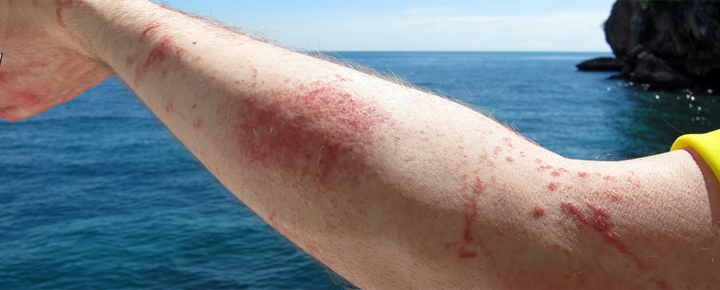

You can still have a jellyfish-sting-free Hawaii vacation.
If you’re headed our way later this year, below we have our updated 2023 Hawaii jellyfish sting warning calendar.
Jellyfish are mostly water.
Their venomous stingers, resembling tiny needles, are located at the tips of their tentacles. These stingers can release their toxin into victims within a millionth of a second. In Hawaii, you may encounter various jellyfish species, including box jellyfish, moon jellyfish, and lagoon jellyfish.
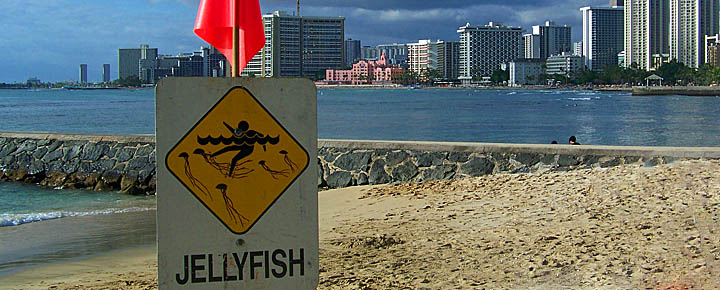

Why is Hawaii prone to box jellyfish invasions?
Recent research conducted over ten years at UH Manoa has shed light on this issue: It’s the “Key number of hours of darkness during the lunar cycle.” Jellyfish come to the shoreline based on the number of hours between sunset and moonrise. Thus, the lunar cycle is critical in the timing of their arrival.
Reproduction: Jellyfish come to the beach to spawn each month.
Interestingly, the jellyfish species found in Hawaii are the only ones known to exhibit this clockwork lunar spawning migration behavior. Similar species can also be seen in Key West Florida, Puerto Rico, and in Saipan.
Now, let’s focus on how you can avoid jellyfish stings – Awareness First:
Location: Hawaii’s south-facing beaches, including Ala Moana Beach Park, Hanauma Bay, Waikiki, and the Waianae Coast on Oahu, are impacted by box jellyfish for approximately eight days following each full moon.
On Kauai, Poipu Beach and Salt Pond Beach may also see jellyfish.
While jellyfish sightings on south-facing beaches of Maui and the Big Island have been less common, they do still occur, as is clear in the visitor comments today.
Timing: The prominence of jellyfish at beaches in Hawaii starts 8 days after each full moon and lasts for about three days, starting eight days after each full moon. If you find yourself on an impacted beach during this time, please check with a lifeguard for suggestions. And, if you spot jellyfish on the beach, you can virtually be sure of their presence in the ocean.
Remaining 2023 Hawaii Jellyfish Sting Warning Dates:
While jellyfish stings can happen at other times, the following dates are when problems are most likely to occur. Be on alert on the days immediately preceding and following these caution dates as well:
August 9 to 11
September 7 to 9
October 7 to 9
November 5 to 7
December 4 to 6
Treatments for Jellyfish Stings:
Regarding treatments, there are various suggestions with anecdotal evidence of their effectiveness. A simple Google search for “jellyfish sting treatment” will provide you with a plethora of suggestions.
Research indicates that some treatments may worsen the situation rather than help. For example, scraping off the tentacles, a traditional approach, can actually intensify the venom release.
Preferred remedies include rinsing the affected area with vinegar and carefully removing the jellyfish tentacles using tweezers. Heat is often suggested as more beneficial than ice for alleviating pain. Vinegar is believed to help reduce the toxin’s effects, while heat slows down the venom. Although we cannot confirm the validity of these claims, we would love to hear more of your thoughts on this matter.
Further steps to take if you encounter a jellyfish sting:
Seek medical help if severe complications or shock occur. Symptoms that can be dangerous include swelling, severe rash, vomiting/nausea, severe headache or stomach ache, respiratory issues, and muscle spasms.
Rinse the affected area with vinegar to neutralize the toxins and carefully remove any jellyfish tentacles. Some individuals suggest using ocean water to wash the area as well.
Applying heat or cold may provide relief. Alternating between the two can reduce pain severity and duration. You may want to try immersing the affected area in warm water between 104 to 113°F for at least 20 minutes. A warm shower can have a similar effect. Taking ibuprofen or acetaminophen may also help alleviate discomfort.
After Bite itch eraser stock has been a long-standing favorite for many. Composed of ammonia and baking soda, it has been used successfully for jellyfish stings, as well as bee and mosquito bites. We keep it on hand. Numerous other options are available online as well.
Mayo Clinic recommendations for jellyfish sting treatment:
Use tweezers to remove visible tentacles.
Soak the affected area in hot water (between 110 to 113°F) for 20 to 45 minutes at a time. Ensure that the water is hot but not scalding.
Avoid scraping off the stingers.
Please share your personal experiences with jellyfish encounters during your Hawaii vacations and let us know which treatment worked best for you.
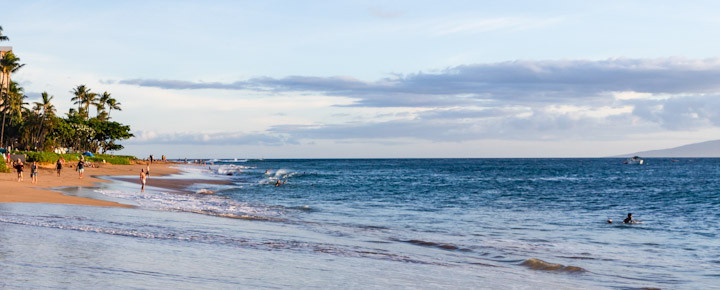
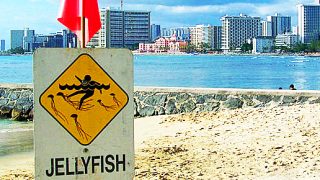

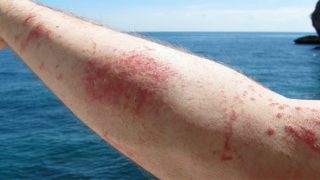
Jellyfish stings yesterday snorkeling
Kaanapali in front of hanua Kai / Westin
Could not see any in the water but noticed fish feeding closer to surface